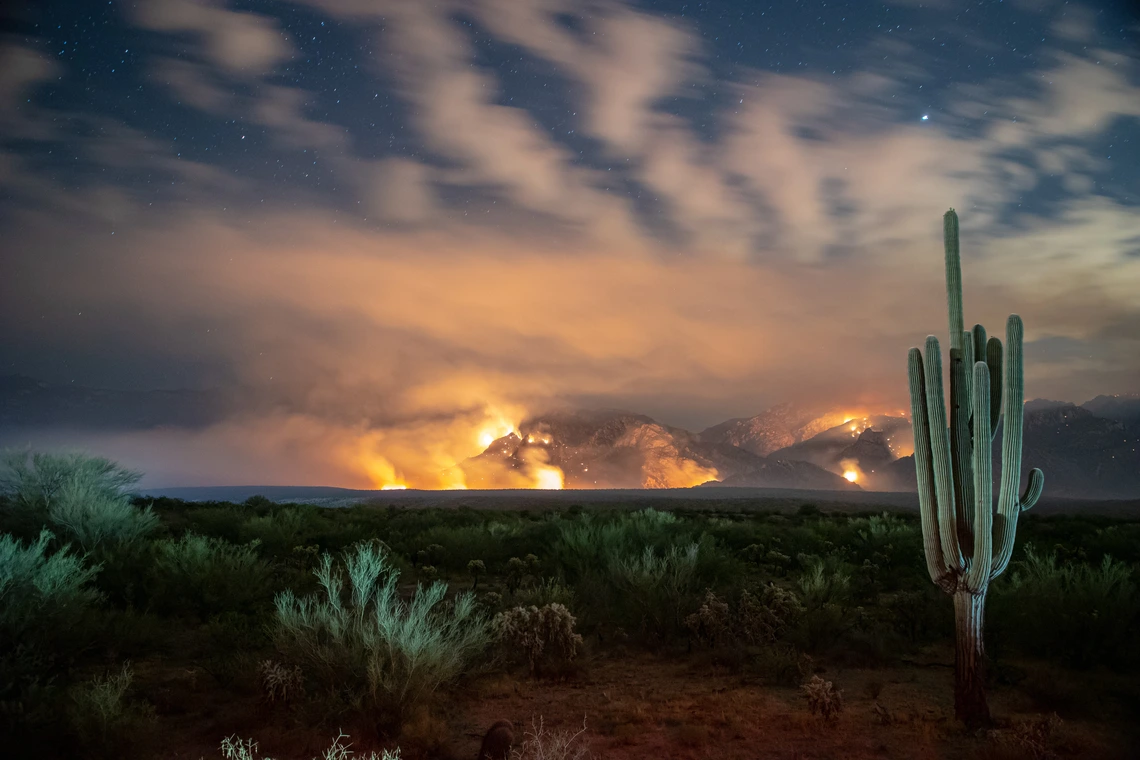SNRE Researchers keeping a close eye on Mt. Lemmon after the Bighorn Fire

FRIDAY, JUNE 18, 2021
SNRE Researchers keeping a close eye on Mt. Lemmon after the Bighorn Fire
A year after the Bighorn Fire burned across Mt. Lemmon, ecologists are returning to the mountain’s burn scars to survey how the ecosystem is coping with the damage. SNRE Research Scientist, Jim Malusa, hiked down the steep northern slopes most affected by the fire to assess recovery and evaluate flash flood and landslide risk.
As threatening as the Bighorn Fire looked from Tucson, large parts of the fire burned at mostly low to moderate severity. Much of the mountain experienced little damage and areas that did are showing signs of recovery. Even in a low elevation canyon that was severely damaged by the fire, however, deep forest species like geraniums are popping up where they are least expected.
“That’s what keeps scientists going: Always being reminded with every trip that you don’t know nothing,” Jim Malusa told the Arizona Daily Star.
Though Mt. Lemmon’s flora is resilient to wildfires, drought conditions and longer fire seasons exacerbated by climate change may hinder recovery processes after fires. With less time and water for seedling growth, plants may have a hard time re-establishing before the next year’s monsoon rains wash them away. These effects are already being observed this year, and Malusa and others are worried that the new growth on steep slopes may not be enough to hold the soil in place. Because last year’s monsoon (or lack thereof) did little to move the loose soil and debris downstream, Pima County is expecting that this year’s monsoon may finish the job, resulting in severe flash floods and landslides. Washes in the northwestern side of the mountain, especially the Cañada del Oro, Finger Rock, Pima, and Ventana washes may all pose a risk of dangerous floods and debris during this year’s monsoon season. All in all, this could mean slower recovery time for areas that were badly hit by the fire.
High severity burn scars may not return as forests, either. A transition to a shrubland – at least for the next several decades – is likely for these areas. Researchers Don Falk and his student, Emily Fulé, will continue to monitor recovery at long-term study plots on the mountain to understand whether forests will remain resilient to wildfires under future climate conditions.
For more details about the mountain’s recovery and this year’s landslide potential, read the full story from Arizona Daily Star here
Photo provided by Frankie Lopez on Unsplash

